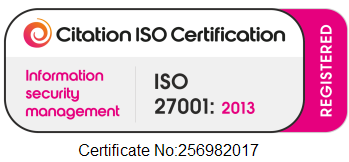Recruitment Reporting & Analytics
The most essential aspect of any business is being able to access and generate reports quickly and accurately. Recruitment is no different and our reporting functions have been developed to provide Recruiters, HR Directors, HR Managers and Line Managers with quick, multiple reports to accurately report on the whole recruitment process and also specific areas of the recruitment process.
If you spent time measuring every single statistic within the recruitment process, you would spend most of your time assessing recruitment data instead of actually recruiting. You may well need to delve into micro statistics now and then and that is why our reporting system has been built to cater for standard reports, micro reports and bespoke reporting.
Measuring recruiting data is important, however, there are some reports that are more important than others. We have outlined below the 4 most important recruiting reports to run every month:
1. Sourcing Channels
Where do your best and worst candidates come from? HR professionals and recruitment departments usually have multiple channels in which they use to attract potential candidates.
It is important to note which channels are the most successful and which need less time and attention.
Our system includes a number of different reporting tools that report on this data:
Candidate Source Report – this automatically tracks from where candidates are applying from. This report allows you to plan where to spend any media budgets and confirms the best jobs boards for your business.
Average Responses Report – this report shows the average amount of responses you receive for each posted job by taking your total amount of candidates and dividing it by your total amount of jobs. This helps you understand the quantity of applications for future recruitment campaigns.
These reports will demonstrate How many candidates are coming from each source, how many of those applicants are qualified and where did the successful candidate first hear about your business.
These reports also help you in planning future recruitment campaigns.
2. Time to Hire
This is the time between the moment your company posts a vacancy to when a candidate starts work at your organisation. This is so important when planning future recruitment campaigns and it also shows any weaknesses in your recruitment processes. Every day that a position is not filled means that you are losing money.
Our system has a specific Average Time to Hire Report – this shows on average how long it takes a candidate to get from Application to Placement in the progress options, the user can change the progress options this report uses in the search parameters. This helps you plan future recruitment campaigns and also shows if any specific part of the process is too lengthy.
Companies with strong talent management processes in place have quick hiring processes compared to those without.
3. Cost of Hiring
For many different reasons, this should be monitored no matter what the position is, or who is being recruited. You may think that just the cost of the job posting subscription should be measured, but it should include every single part of the process. Costs should include Job Posting, other media buying, and Recruitment fees, internal or external should all be accounted for. How long did it take the HR or Line Manager to interview a candidate? Were there additional people in the interview room? Was any paid advertising included?
4. Open Positions vs. Positions Filled
This report compares the number of positions that are still open with the number of positions that have been filled recently. This is something that needs to be reviewed every month and should be alongside the time to fill reports, with the two being directly related to each other.
Our reporting tools generate an Active Jobs per User Report – you can instantly see how many live jobs each user/line manager has on the system. You can review any blockages in the process or review if any user has a large or low amount of active positions on the system.
With a good Applicant Tracking system, there should be a low amount of open vacancies, compared to the number of positions filled.
Our recruitment software and solutions have been built with all of these issues in mind. Our applicant tracking systems come with a high level of reporting options included as standard. If you need bespoke reporting, we can also assess your requirements and build it for you.
Take a look at some of our reporting tools which are included as standard in our applicant tracking systems. If you use our careers website design services, we also connect your website to Google Analytics where you can report on visitors statistics and manage your search engine optimisation, which we will assist you with as well.
Contact us for a detailed consultation on your current recruitment processes.




Comments are closed